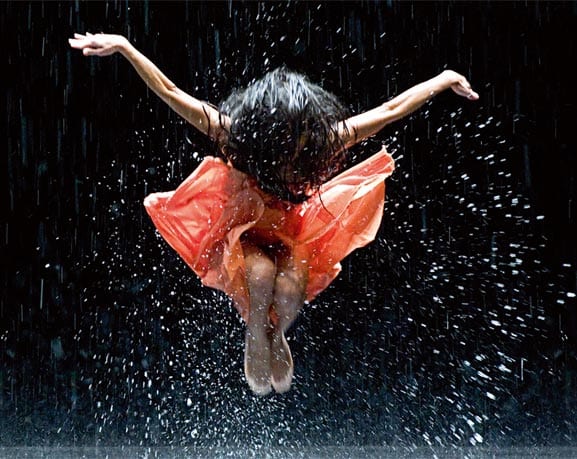The Wonderful World of Pina
This weekend I stumbled across a documentary film about the late contemporary choreographer, performer, teacher and director Pina Bausch, entitled Pina, by Wim Wenders.
http://youtu.be/CNuQVS7q7-A
I was captivated. What struck me the most about the work of Pina Bausch is how expressive the body can be. Words are sparingly used and when used they are to set an enigma, or simply to punctuate the action. What I noticed was how increasingly sounds were used, with strong emotional noises escaping the performers, for example during a scene in Café Muller, where if you listen closely you can hear the performer’s breathing become more and more urgent and desperate as they perform the same sequence with increased speed each time:
I hope that we can incorporate some of these aspects of strong physical and oral performance in our sequences as I found them incredibly moving and more powerful than a scripted drama.
In the work of Pina Bausch there are continuing themes of love, intimacy and relationships- with all their tensions and difficulties and then there are explorations of loneliness, alienation, angst, the inability to make human connections, rejection and the struggle for self-identity (Tashiro). These themes, particularly towards the end of the list, are especially relevant to the ideas of our performance.
Furthermore, Pina’s work explores what is known as ‘Phenomenology’ – “Approaching the everyday with a different kind of awareness and focusing on the “how” (rather than the “what”) (Staehler, 2009, p.350). The notion of the performance of the everyday was one of the original topics that most interested us, and I think it is important to return to this idea as we begin to devise the actual sequences that we will perform on our chosen site. One possibility is to explore the disparity between the past ‘everyday’ before there was such things as ‘smart phones’, the present ‘everyday’ with regards to our attention being pulled more and more into a virtual world and then the future ‘everyday’ with an extreme imagining of what could be our future if technology continues to invade our natural habitat to the point where the body becomes irrelevant.
We could use influences of Pina Bausch’s choreography with regards to specific focus on the body. Staehler describes two means which are employed in Bausch’s work where everyday actions are performed: repetition and isolation.
“On an everyday level, movements are only repeated if the purposeful actions calls for such repetition (such as household chores, for example). When repeating a movement without such a purpose, we focus on the movement as such and notice aspects which remain hidden otherwise, like the beauty of washing ones hair […] The everyday body is thus revealed in Pina Bausch’s work as distinct from objects and as our unique point of access to the world, engaged in actions which are embedded in various contexts or horizon. Furthermore, it is revealed as affected by the world and its elements – the second approach to the body.” (p.354)
Where Pina isolates everyday actions embedded in our daily routines, such as eating, washing, dressing, combing, but also basic movements like running, walking, sitting, and lying down (Staehler, p.355), I propose that we hone in on the more recently evolved social networking habits that have appeared in the ‘everyday’ of recent times.
It will at least be interesting to pursue our ideas with this approach in mind.
References-
Staehler, Tanja (2009) “Rough Cut: Phenomenological Reflections on Pina Bausch’s Choreography.” In Janus Head, pp. 347-65, available online @ http://www.janushead.org/11-2/Staehler.pdf
Tashiro, Mimi (1999) Pina Bausch: Life and works, Stanford University, available online @ http://prelectur.stanford.edu/lecturers/bausch/life.html
By Sylvia Entwistle.
